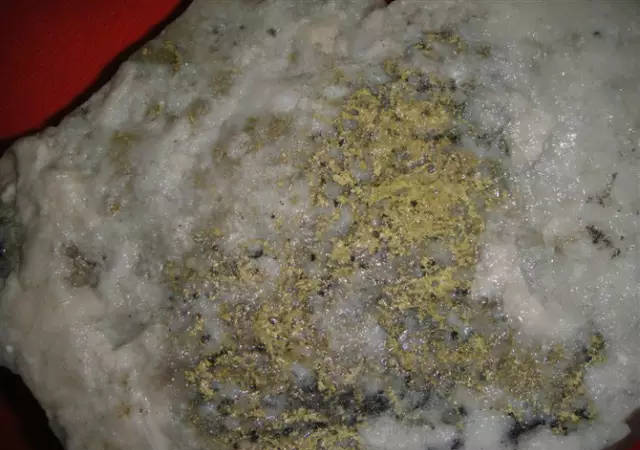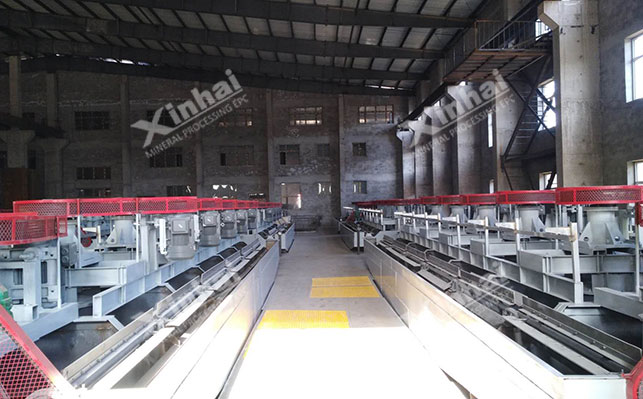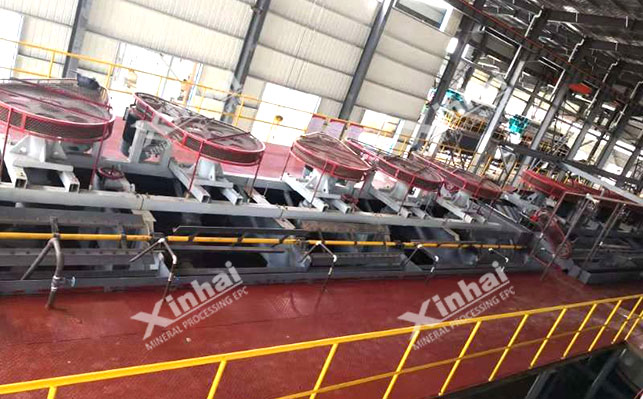Among antimony gold (arsenic) sulfide ores, the main target minerals are stibnite, natural gold, pyrite, arsenopyrite, etc., while pyrite and arsenopyrite are the main gold bearing minerals, and some stibnite also contains gold. Arsenopyrite contains arsenic, and sometimes pyrite also contains arsenic. Therefore, this type of ore contains high arsenic.

The separation of antimony and gold (arsenic) in this type of ore is mainly the separation of stibnite from pyrite, arsenopyrite and other minerals, except that coarse-grained natural gold is recovered by gravity separation. The technological process of flotation separation of antimony gold (arsenic) minerals includes preferential flotation and mixed preferential flotation in practice. There are several methods of flotation separation:
Adopt the preferential flotation process, add sodium hydroxide to the ball mill, grind the ore in the strongly alkaline pulp to inhibit stibnite, activate pyrite and arsenopyrite with copper sulfate, adjust the pH value of the pulp to 8 ~ 9, add collectors and foaming agents, flotation pyrite and arsenopyrite, get gold (arsenic) concentrate, add lead salt or copper salt to its tailings to activate stibnite, and then add collectors and foaming agents for flotation, get antimony concentrate.

In the grinding process, sodium hydroxide and sodium carbonate are added, and then lead acetate, copper sulfate, sodium butyl xanthate (butyl xanthate) and sulfuric acid are added for mixed flotation to obtain antimony gold mixed concentrate and waste tailings. After regrinding the mixed concentrate, sodium hydroxide, butyl xanthate and copper sulfate are added during grinding and aerated for a few minutes, and then flotation separation is carried out to obtain the crude gold concentrate. The product in the tank is antimony concentrate. Then, the crude gold concentrate is cleaned by sodium sulfide sodium hydroxide method to inhibit stibnite to obtain gold concentrate and low-grade antimony concentrate.
Before the flotation separation of mixed concentrate, add oxidant bleaching powder (caocl2) or potassium permanganate (KMnO4), slurry solid: liquid =1:3, stirring time is 1min, then add 100g/t lead acetate, and use xanthate as collector to flotation stibnite. Its tailings are gold bearing pyrite concentrate.

It is a method of flotation separation of antimony gold (arsenic) by using ammonium butyrate black, which has strong collecting ability and good selectivity for stibnite, but weak collecting ability for arsenopyrite and pyrite. First, coarse-grained monomer natural gold is immediately selected in the grinding classification circuit with a gold collector or gravity separation. Then, a preferential flotation process is adopted, in which lead salt is used as the activator of stibnite, sulfuric acid is used to adjust the pH value of the pulp, ammonium butyrate black is used as the collector, terpineol oil is used as the foaming agent, and stibnite is flotation out of the natural pH or weak acid pulp to obtain antimony concentrate. The flotation tailings are the coarse concentrate of arsenopyrite (Pyrite) containing gold (because ammonium butyrate black has a weak ability to collect arsenopyrite). The tailings are added with butyl xanthate, activated with copper sulfate if necessary, and then frother is added to flotation the gold bearing arsenopyrite concentrate, from which gold is extracted. Gold in antimony concentrate is comprehensively recovered in the process of smelting antimony.
Antimony gold polymetallic sulfide ore is produced in the antimony gold paragenetic deposit filled with medium and low temperature hydrothermal fissures. The main mineral is stibnite, followed by natural gold, stibnite, antimony oxide, chalcopyrite, pyrite, arsenopyrite, etc. Gangue minerals are mainly quartz, followed by sericite, silicate, etc. Stibnite is mostly dense and massive. Natural gold is in irregular particle shape, and gold and arsenopyrite are closely symbiotic.
The flotation separation method of antimony containing gold ore generally adopts the mixed preferential flotation process. Grinding the ore to -0.074mm is 60% - 80%. First mix and flotation antimony gold (arsenic) to get the mixed concentrate, then carry out antimony gold (arsenic) flotation separation, use sodium sulfide sodium carbonate method to suppress stibnite, flotation gold (arsenic), and get the gold (arsenic) concentrate after twice cleaning, and the product in the tank is antimony concentrate; The tailings of mixed flotation are scavenged, and the foam products of scavenging are fed into the antimony gold (arsenic) flotation separation system. The products in the tank are then subjected to one antimony roughing, one concentration and one scavenging to obtain the finished antimony concentrate and waste tailings. The middlings return to the scavenging operation of antimony gold (arsenic) mixed flotation.